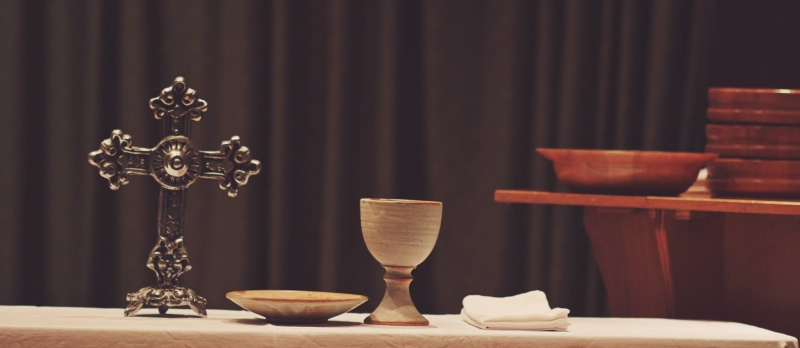Reading scripture is (or should be) like holding up a mirror up to your own heart. It’s been said of scripture that you should not merely read it but let it read you. In reading through 1 and 2 Samuel of late, this very thing has been on my mind. Reflected in the lives of Saul and David is my own heart, my own life.
Author: David Westerfield Page 17 of 118
(Photo Credit: Jewett Photography – DFW Photographers http://www.jewettphotography.com/)
This is a great series of posts from R. Scott Clark on communion, how it has been desecrated through historical innovations, but then on the other side of the spectrum memorialized and in many cases completely trivialized in the larger, popular evangelical world. He then offers what is the historic Reformed view, a recovery of this means of grace.
http://heidelblog.net/2015/05/heidelberg-75-the-supper-is-more-than-a-memory/ (Part 1)
‘…his delight is in the law of the LORD…’ (Psalm 1:2)
Though this certainly means delighting in his word as a whole, this verse gives specific reference to the law. The blessed one of God, the one in God’s favor, delights in the commandments of God and doing them, for it is to this he has been saved. For the one blessed of God, no longer is obedience a burdensome task of trying to find acceptance with Him (justification) since that has already been obtained through Christ and His work through faith, granted as a gift. Christ has provided the righteousness necessary to stand in the Father’s presence, out of His sheer mercy. But now, having been accepted, obedience stems from the joy of the believers heart, because of God’s work on his behalf. The one in God’s favor delights in obedience out of the overflow of His heart.
Brian Davis, the pastor of Trinity Presbyterian Church, a PCA church plant in Fort Worth that is starting up in August (that our family will be attending :)), recommended a couple of books that look really interesting on spiritual formation: Desiring the Kingdom and Imagining the Kingdom by James K.A. Smith.
http://www.str.org/articles/the-myth-of-moral-neutrality#.Vae9uYUo7bg
“One of the most entrenched assumptions of relativism is that there is such a thing as morally neutral ground, a place of complete impartiality where no judgments nor any forcing or personal views are allowed. Each takes a neutral posture towards the moral convictions of others. This is the essence of tolerance, the argument goes.”
“What are values clarification exercises meant to teach? That there are difficult ethical circumstances in which the lines are not clear and the solutions are ambiguous? We already know that. No, these exercises go further. They imply that because some circumstances are ethically ambiguous, there are no ethical certainties at all.
As a teenager growing up in east Fort Worth, in the summer of 1995, I can remember it well. Stuck in the doldrums of my own sin, like a washing machine on spin cycle, I was miserable. With a number of dark industrial bands blaring in the background of my room, in anger I tried to ignore and suppress the Lord calling me, until one day this guy showed up to my house, in my room, and brought a presence with him that I couldn’t explain. We chatted some, then he looked at my CD collection and said very directly, “You need to get rid of all these and throw them away.” Now normally, anyone else could have told me this and I would have cynically blown it off as some religiousy call to “clean my act up.” Not that day.
This is fascinating to watch:
The following is an essay from 2001 by political scientist James Kurth on the “Protestant Deformation” or what could be described as the radical secularization of Protestantism. As he notes, we’re now entering the final stages of this deformation, a long and twisty road that has led us to a radical individualism that threatens a new form of totalitarianism upon the free world: the totalitarianism of the self. Enjoy.
http://web.archive.org/web/20120119184608/http://phillysoc.org/Kurth%20Speech.htm
H/T http://www.theamericanconservative.com/dreher/the-protestant-deformation/
Analysts of American foreign policy have debated for decades about the relative influence of different factors in the shaping of American foreign policy. National interests, domestic politics, economic interests, and liberal ideology have each been seen as the major explanation for the peculiarities of the American conduct of foreign affairs. But although numerous scholars have advocated the importance of realism, idealism, capitalism, or liberalism, almost no one has thought that Protestantism – the dominant religion in the United States – is worth consideration. Certainly for the twentieth century, it seemed abundantly clear that one could (and should) write the history of American foreign policy with no reference to Protestantism whatsoever.
 Katie Lou Gardner Westerfield passed away at the age of 86 in Ridgeland on May 22, 2015. A lifelong resident of Mississippi, she was born in Neshoba on May 30, 1928 to James Alton and Nannie Pearl Gardner. She grew up in Philadelphia with sisters Fannie Bee and Lyda.
Katie Lou Gardner Westerfield passed away at the age of 86 in Ridgeland on May 22, 2015. A lifelong resident of Mississippi, she was born in Neshoba on May 30, 1928 to James Alton and Nannie Pearl Gardner. She grew up in Philadelphia with sisters Fannie Bee and Lyda.
Visitation will be from 3-5pm on Sunday at Ott and Lee Funeral Home in Richland. The service will be 10am Monday, May 25, 2015 in the chapel of the funeral home and interment will be at Lakewood Memorial Park on Clinton Blvd.
After graduating as valedictorian from Philadelphia High School, she moved to Jackson and began a secretarial career. Katie placed her working career on hold after the births of her children. She retired in 1991 from the Mississippi Department of Education, Vocation and Technical Division, where she worked as Secretary for the State Supervisor of Health Occupations Education and the Assistant State Director of Programs Operations Services. She continued her education while working and obtained a Bachelor’s in General Studies from Mississippi College.
To test out the migration of a site from SharePoint 2010 to 2013, I needed to convert a test environment web application to claims authentication to prepare for the move. However, to prove out my methodology and make sure I had the process down, I converted the web app back to classic authentication in order to repeat my steps. I’ve found a number of sites that explain how to do this, but have yet to find it all consolidated into one post. So here’s what I’ve found.

